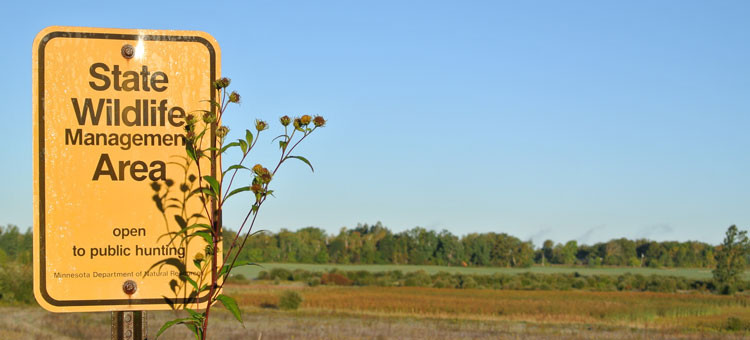Wildlife Management Areas: What, Where, Why
Wildlife management areas (WMAs) are part of Minnesota's outdoor recreation system and are established to protect those lands and waters that have a high potential for wildlife habitat and other compatible recreational uses. WMAs are key to:
- protecting wildlife habitat for future generations,
- providing citizens with opportunities for hunting, fishing and wildlife watching, and
- promoting important wildlife-based tourism in the state.
How did WMAs get started?
Minnesota's WMA system started in 1951, when the State established its "Save the Wetlands" program to buy wetlands and other habitats from willing sellers to address the alarming loss of wildlife habitat in the state. Initiated by a handful of visionary wildlife managers, the WMA program evolved into the present-day system of WMAs.
How many WMAs are there and where are they located?
There are over 1.3 million acres of high quality habitat in about 1,500 WMAs located throughout the state, making it one of the best and largest WMA systems in the country.
How are WMAs managed?
WMAs are the backbone of DNR's wildlife management efforts in Minnesota. Much of the wildlife managers' work is directed toward protecting and enhancing wildlife habitat on WMA lands. For instance, prairie and grasslands are planted, wetlands are restored and enhanced. Prescribed burning is done to maintain grasslands, prairies, and brush lands. Forest openings and regeneration projects benefit create wildlife habitat. Different management practices are utilized for different ecotypes.
What can I do to help?
There are opportunities to volunteer at WMAs by picking up trash to assisting with seed collection and much more! For more information and locations of WMAs go to this link https://www.dnr.state.mn.us/wmas/index.html.
For more information contact Becky Wozny, Wetland Specialist, at
